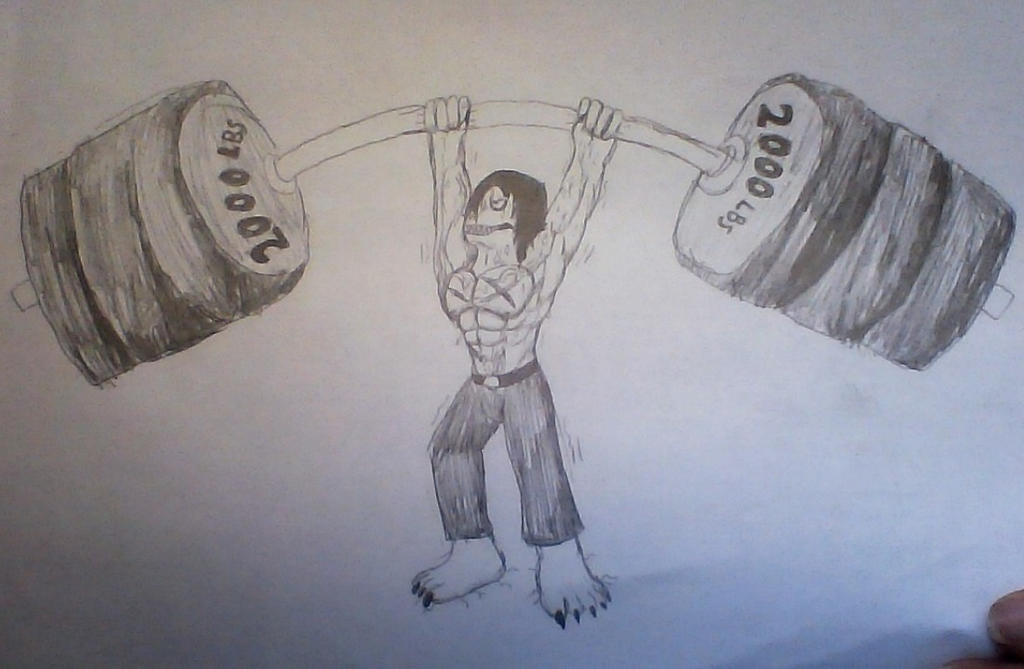In the last post we spoke about the factors that generate strength, which are mass and acceleration; the first one is the muscle size (muscular cross-sectional area) and the second one is the central neural system (CNS).
For the mass, I will redirect you to this post.
Now, let's focus on our neural system.
There are six aspect of the CNS that we can improve in order to get stronger:
- Fiber Recruitment
- Firing Rates
- Intra-muscular Coordination
- Inter-muscular Coordination
- Antagonist Disinhibition
- Growth and Pruning
The more force is needed, the more the recruitment
increases. Our nervous system is able to prevent injuries by reducing
the number of fiber recruited when the tension on the muscles goes
behind the “warning point”, i.e. too much weight. Yet, with
training this inhibitory process can be reduced, which increases the
number of fiber recruited; remember: more fibers, more force.
When all the fibers of the muscle are recruited, fire
rating occurs. Basically, when our CNS senses that all the muscle
fibers are recruited, it sends more electrical signals to the muscle
to tell them to contract faster which further increases the strength
produced.
Coordination referees to the ability of the muscle to
synchronize its contraction between it own fibers, intra-muscolar
coordination, and between other muscles, inter-muscular coordination.
In untrained people, motor units fire random signals
to the muscles to recruit the force necessary; as they further train,
their CSA is able to synchronize the firing of the motors units.
It is like rowing; the team performs better if
everybody row at the same time instead that randomly.
Antagonist disinhibition can improve the strength
produced by the agonist muscle. This is achieved by extensively
stretching the muscle opposite the one you are going to work. For
instance, stretching the triceps if you are going to work the biceps.
This process is call reciprocal inhibition; the CSA
sends the signals to contract the biceps and at the same time it
sends a message to the triceps to relax.
The growth and the pruning of neural pathways is an
automatic process that occurs in the brain; for this reason, we will
not go in details. The more you practice a movement, the more the
neural pathway for that movement grows stronger. Think about a new
technique, over head squat for instance; at the beginning you may not
be able to perform it properly because you haven't never done it
before. But, after two, three, four weeks of over head squat you will
master it (well, you should....).
(all this session,
Low, 2011)
So, how do I train my CNS?
To develop max strength, you should work with weights
between 80% and 100% of your 1RM, 1 to 4 sets (Bompa, 1996). Bear in
mind that this kind of training is very strenuous for both your CNS
and muscles. Keep the rest between 3 and 6 minutes (for the 95% /100%
1RM); this is the time necessary to restore the ATP stores within
your muscles.
The most popular method to develop strength is doing
exercises with gradually increase the weights (Kurz, 2001). A
work-out may looks something like this:
(set·rep @x% of RM)
3·3 @60% of RM
1·3 @70% of RM
1·3 @80% of RM
2·2 @85% of RM
2·2 @90% of RM
1·3 @70% of RM
REFERENCE
Bompa, T. O. (1996). Power training for sports:
plyometrics for maximum power development. Ontario:
Mosaic Press.
Kurz, Thomas (2001). Science of sport training:
how to plan and control training for peak performance. Island
Pond: Stadion.
Low, Stewen (2011).
Overcoming Gravity: a systematic approach to gymnastic dn
bodyweight strength.

No comments:
Post a Comment